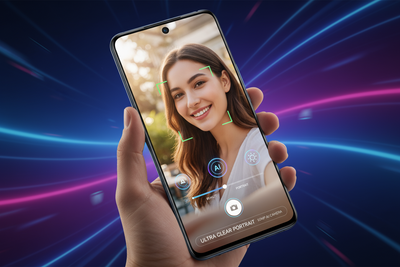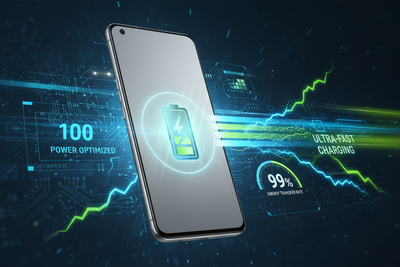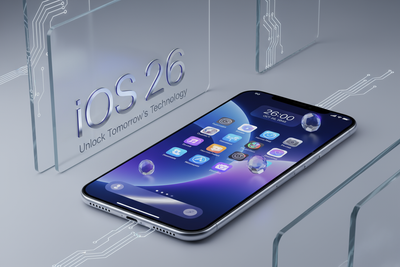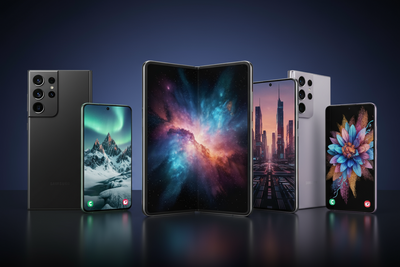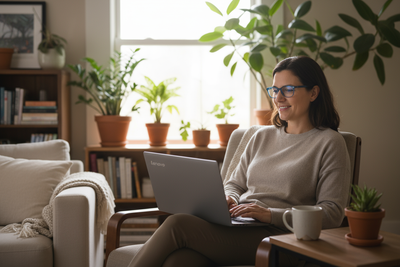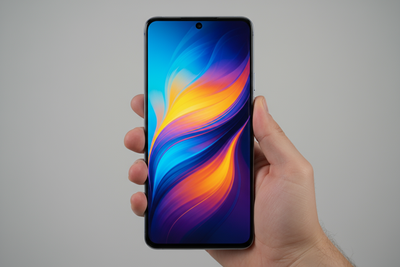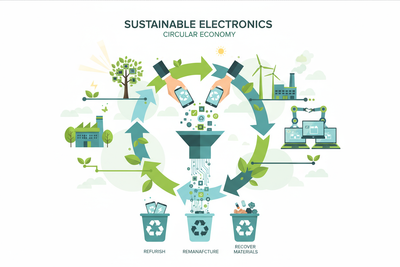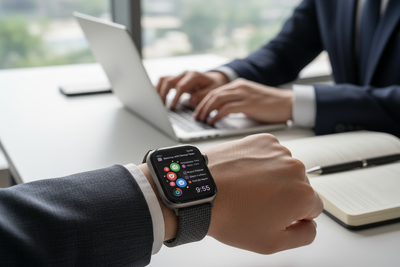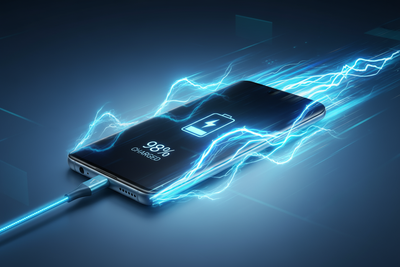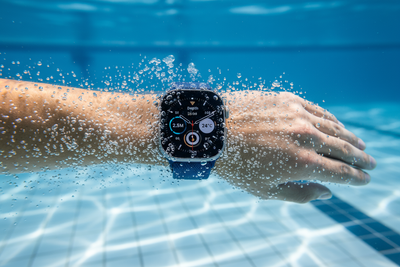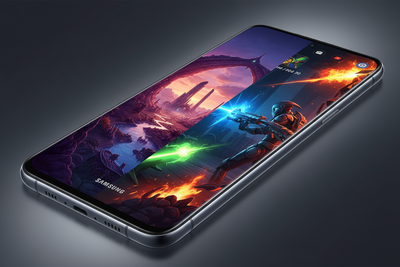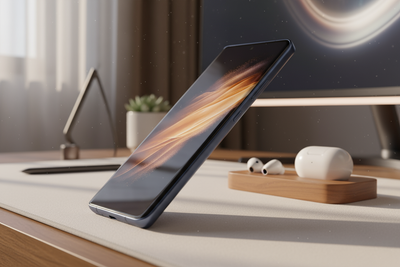Introduction
The first developer preview of Android 15, also known as Vanilla Ice Cream, has been released. While it is exciting, it is important to exercise caution when considering manually flashing the developer preview. As with any new developer update, there are bound to be issues, bugs, and crashes that can disrupt your device's performance.
To provide a firsthand experience, the author has flashed Android 15 DP1 on their Pixel 7 Pro. This way, readers can gain insights without going through the potential challenges themselves. It's worth noting the irony in the transition from calling the base version of Android vanilla Android to now referring to Android 15 as Vanilla Ice Cream.
In celebration of this release, the author has also created Android 15-inspired wallpapers, giving users the opportunity to showcase a fresh new look on their home screens.
New Features in Android 15 DP1
With the release of Android 15 DP1, users can expect some exciting new features and improvements. Here's a rundown of what's new:
Change in the Easter egg within the settings
The Easter egg within the settings of Android 15 DP1 has been changed to match the new triangular logo of Android 15. This small update adds a touch of fun to the user experience.
Introduction of the notification cooldown feature
A new feature called "notification cooldown" has been introduced in Android 15 DP1. This feature gradually lowers the notification volume when you receive multiple messages or notifications from the same app back-to-back. It helps to prevent overwhelming notification sounds and allows for a more pleasant user experience.
New option to disable keyboard haptics
In the vibration and haptics menu of the settings, users now have the option to disable keyboard haptics. This feature allows users to turn off keyboard vibrations, regardless of the keyboard app they use. It provides greater control over the typing experience.
Addition of haptic feedback when changing brightness
Android 15 DP1 now provides haptic feedback when changing the brightness in the quick settings. Although subtle, this addition enhances the overall user experience by providing tactile feedback.
Enhancements to the Bluetooth tile in quick settings
In Android 15 DP1, users can expand the Bluetooth tile in the quick settings and quickly switch between paired devices without navigating to the settings menu. This improvement makes managing Bluetooth devices more convenient.
Introduction of the show HDR SDR ratio option
For photography enthusiasts, Android 15 DP1 includes a new feature called "show HDR SDR ratio." This feature displays the ratio between HDR and SDR composition for photos when they are viewed in full screen. It offers valuable information for users who want to understand the dynamic range of their photos.
New feature for Pixel Fold users - continue using apps on fold
Pixel Fold users will appreciate a new feature in Android 15 DP1 that allows them to continue using apps while folding or unfolding the device. Users can choose different options for app transitions, such as automatic screen switching or swiping to continue using the app on the other screen. This feature provides greater control and flexibility for Pixel Fold users.
Improved control over folding/unfolding actions
Android 15 DP1 offers improved control over folding and unfolding actions for foldable devices. Users can customize their device's behavior when folding or unfolding, allowing for a more tailored experience. This enhancement addresses the unpredictability of app transitions in Android 14.
Overview of the current features and changes in DP1
Overall, Android 15 DP1 introduces several new features and improvements, including changes to the Easter egg, the notification cooldown feature, the option to disable keyboard haptics, haptic feedback for brightness changes, enhancements to the Bluetooth tile, the show HDR SDR ratio option, features for Pixel Fold users, and improved control over folding/unfolding actions. While this developer preview is still in its early stages, it sets the stage for more exciting features and changes to come in future updates.
Timeline for Android 15 Releases
With the release of the first developer preview of Android 15, users are eagerly looking forward to the timeline for upcoming beta releases and the stable release. Following the pattern of previous years, beta releases can be expected in the springtime, allowing users to test out new features and provide feedback to Google. This will be followed by several beta iterations to address any bugs or issues reported by users.
As for the stable release, it is anticipated to be around the summer, giving Google enough time to fine-tune the operating system and ensure a smooth user experience. Additionally, it is speculated that the release of the new Pixel flagship may coincide with the stable release. This flagship device is expected to showcase the full potential of Android 15 and provide users with the latest hardware and software advancements.
Looking ahead to future updates, there is great anticipation for more features and changes. Rumors suggest that Android 15 may bring back lock screen widgets, allowing users to customize their lock screen with useful information and functionalities. There is also the possibility of saving app pairs to the home screen for quick access to multitasking. This feature would be especially handy on larger smartphones.
Another exciting rumor is the ability to archive apps within the app info page. This would allow users to downsize apps they rarely use without losing any app data, freeing up storage space. Additionally, a potential "private space" feature could provide enhanced privacy by hiding sensitive apps and requiring extra authentication to access them.
For users who prefer a simpler user interface, Android 15 might introduce an "easy preset" option. This feature would enlarge icons and text, add contrast, and move navigation buttons to the bottom of the screen, making it more accessible for older users or those who are less tech-savvy.
Overall, the release of Android 15 DP1 sets the stage for more exciting updates in the coming months. Users can look forward to beta releases, the stable release, the launch of the new Pixel flagship, and the introduction of new features and improvements. Keep an eye out for further announcements and enjoy the evolving Android experience!
Exciting Rumors for Future Android 15 Updates
- Possibility of lock screen widgets making a comeback
- Consideration of limited availability for tablets and multi-user devices
- Potential inclusion of saving app pairs for quick access
- Introduction of app archiving to downsize packages
- Possibility of a 'private space' feature for hiding sensitive apps
- Potential addition of an 'easy preset' option for older users
- Expected improvement in accessing battery health information
Conclusion
To continue exploring the exciting features of Android 15, the author encourages viewers to watch another video that covers the latest Android 14 features. This will provide a comprehensive understanding of the advancements in Android OS and keep users up to date.
Additionally, the author extends an invitation to watch a video showcasing the construction of their own setup. This can offer inspiration and ideas for creating a personalized and efficient workspace.
Lastly, the author kindly requests viewers to share their desired features for Android 15. This feedback will contribute to the ongoing development and improvement of the operating system, ensuring that user preferences are taken into account.
Stay tuned for more updates and enhancements in the evolving Android experience!
FAQ
1. Can I manually flash Android 15 DP1 on my device?
Yes, you can manually flash Android 15 DP1 on your device if you have one of the latest Google Pixel devices. However, it is important to exercise caution as there may be issues, bugs, and crashes that can disrupt your device's performance.
2. What are the risks of flashing the developer preview?
Flashing the developer preview of Android 15 comes with certain risks. As it is still in its early stages, there may be issues and bugs that can affect the stability and performance of your device. It is recommended to only flash the developer preview if you are comfortable troubleshooting and are willing to accept the potential risks.
3. When can we expect the stable release of Android 15?
The stable release of Android 15 is anticipated to be around the summer. Google will likely release beta versions in the springtime to allow users to test new features and provide feedback. The stable release will come after several beta iterations to address any reported bugs or issues.
4. Will the new features be available on all Android devices?
The availability of new features in Android 15 may vary depending on the device. Some features, such as lock screen widgets and app archiving, may be limited to specific devices like tablets and multi-user devices. It is best to check with your device manufacturer or Google for more information on feature availability.
5. Will Android 15 support lock screen widgets on smartphones?
There are rumors that Android 15 may bring back lock screen widgets. However, it is speculated that this feature may be reserved for tablets and multi-user devices. It is still unclear if lock screen widgets will be available on smartphones. More information will likely be revealed as Android 15 continues to develop.







